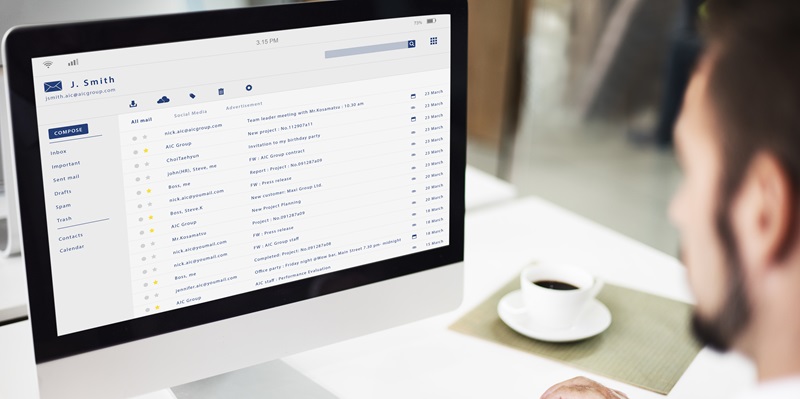In today’s fast-paced digital world, email has become an essential communication tool. Whether sending a business proposal, reaching out to a potential client, or catching up with a friend, email allows us to convey messages instantly. However, have you ever considered the impact your email sign-off can have on the reader? It may seem like a trivial detail, but choosing an email sign-off that aligns with your message tone and intent can make a significant difference in how readers perceive you and how connected they feel to your message.
Factors to Consider When Deciding on an Email Sign-off
When selecting an appropriate email sign-off, it is crucial to consider the expected outcome or desired action from the recipient. If your email is marketing or sales-related, you’re likely hoping to elicit a response. In this case, you might consider using a professional sign-off that imparts a sense of respect and sincerity, such as “Regards,” “Best,” “Sincerely,” “Respectfully,” or “With gratitude.” These sign-offs convey a level of professionalism and courtesy, encouraging the recipient to engage in further conversation or take the desired action.
Professional Email Sign-offs
For formal or professional communication, sticking to tried-and-true sign-offs is often the safest choice. These classic options reflect a sense of professionalism and set the tone for official correspondence. “Regards” is a versatile sign-off that works well in various situations, showing respect and professionalism. “Best” is concise yet friendly, expressing good wishes for the recipient. “Sincerely” is a common choice when conveying a sincere tone. “Respectfully” is suitable when addressing a senior colleague or person of authority. “With gratitude” is an excellent way to express appreciation and leave a positive impression.
Work-friendly Email Sign-offs
In a work environment where a more relaxed atmosphere is present, it’s essential to strike a balance between professionalism and friendliness. Choosing a work-friendly email sign-off allows you to maintain a professional rapport while infusing a touch of warmth and consideration. “Cheers” is a versatile option suitable for both formal and informal communication, offering a friendly and positive note. “Take care” shows genuine concern and thoughtfulness, indicating your consideration for the recipient’s well-being. “Thank you” is an excellent choice when expressing gratitude or acknowledging a favor. “All the best” is a warm and well-wishing sign-off that conveys your positive intentions.
Importance of Fitting the Context and Relationship with the Recipient
Injecting humor into email sign-offs can brighten someone’s day and create a memorable interaction. However, it’s crucial to consider both the context and your relationship with the recipient before using a funny sign-off. If you share a close and relaxed bond, a humorous sign-off can strengthen your connection and add a personal touch. However, in formal or professional settings, it’s best to err on the side of caution. A lighthearted and witty sign-off should always be appropriate and align with the recipient’s sense of humor.
Creative Email Sign-offs
Sometimes, you may want to inject creativity into your email sign-off to stand out or add a personal touch. Creative sign-offs can provide that extra flair to your message while still maintaining professionalism. For instance, using “TGIF” (Thank Goodness It’s Friday) at the end of your email can add a sense of enthusiasm and anticipation for the weekend. “Let me know if you would like more information about XYZ” shows your willingness to provide further details and engage in further conversation. “Hope your Monday goes smoothly” is a friendly and supportive sign-off that helps brighten the recipient’s day.
Warm Email Sign-offs
Warm sign-offs are an excellent way to express genuine sentiments and strengthen personal or professional relationships. These sign-offs typically communicate a sense of warmth, care, and appreciation for the recipient. “Stay awesome” is a friendly and encouraging sign-off, projecting positivity and support. “You’re an inspiration” acknowledges and admires the recipient’s qualities or achievements, creating a bond of admiration and respect. “Warmly” is a versatile and sincere sign-off that leaves a lasting impression of kindness and thoughtfulness.
Casual Email Sign-offs
When emailing friends, close contacts, or in informal situations, a casual sign-off can create a relaxed and comfortable tone. These sign-offs allow for a freer expression of personality and familiarity. “Let’s chat about this” expresses eagerness to continue the conversation further, opening up the possibility for a follow-up discussion. “Sending you good vibes” is a casual and friendly way to express well-wishes and positive energy. “Talk soon” indicates your desire for future communication, maintaining an ongoing relationship.
In conclusion, choosing the right email sign-off is not merely a formality but an opportunity to strengthen communication and foster a connection with your reader. By considering factors such as the expectation of a response, the desired action, the tone, and the relationship, you can select a sign-off that aligns with your message and enhances the overall effectiveness of your email. Whether you opt for a professional, work-friendly, funny, creative, warm, or casual sign-off, each choice conveys a different tone and intent. So, take a moment to reflect on your message and make the most suitable sign-off choice to leave a lasting impression on your recipient.

